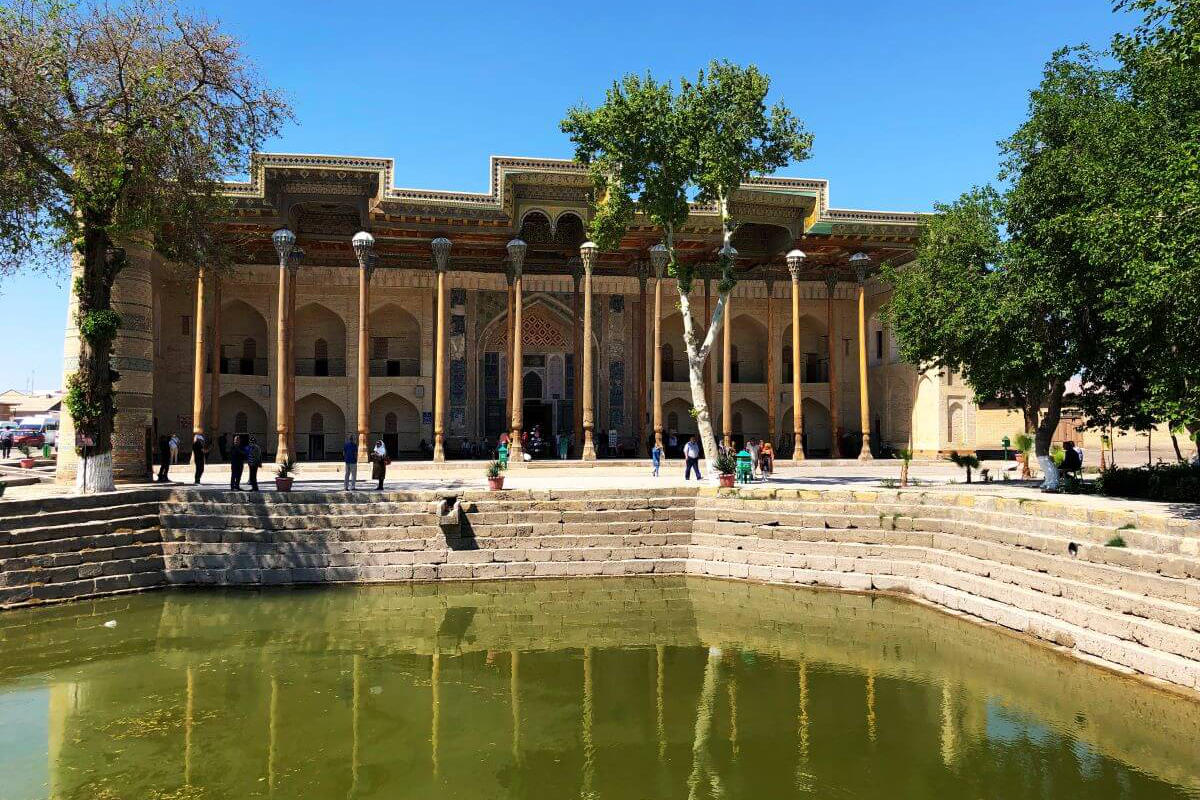Bukhara - Bolo Havuz Complex
The largest cities in the Orient had one striking feature in common and that was the mandatory existence of Registan. This was the name of the central city square where many public buildings were located. The city’s most important mosques, large palaces and minarets were located here, as well as hospitals, chambers of commerce and the state chancellery.
Bukhara also had its own registan, located opposite the fortress called Ark. Unfortunately, of all the buildings in this huge square in Bukhara, only the Bolo Havuz complex has survived to this day. It was built at the beginning of the XVII century by order of Emir Shakhmurad, who was the ruler of Bukhara at that time. Emir wanted to prove to the inhabitants of the city that he was a normal man. Therefore, he wanted to build a public mosque on the Registan, which he personally intended to visit every Friday.

The name of the complex translates into English as “children’s pool”. It is related to the fact that the Bolo Havuz was used as a water source. Practically everywhere in Central Asia there were problems with the availability of drinking water. For this reason, it was necessary to build artificial water reservoirs (havuze) that could supply all inhabitants with life-giving water. Water carriers fetched the water from the reservoirs and distributed it at the bazaar, hospitals and residential areas for a fee.
This tradition of water distribution continued in Bolo Havuz complex in Bukhara until the Soviet Union came to power. The new state power forbade the population to use the artificial water reservoir in order to avoid mass diseases caused by stagnant water. But the population continued to use this water out of old habit, so the water reservoir had to be drained.
The mosque has managed to survive to this day and still receives visitors for Friday prayers. The building itself still has a graceful and luxurious appearance (remember, it was built for the ruler), making it one of the most popular sights in modern Bukhara. The building has been decorated for over three centuries with twenty wooden columns with intricate carvings that confidently support the ceiling of the mosque. The city’s residents call Bolo-Havuz by no other name than “the mosque of forty pillars”. The complex got this name because of the twenty pillars and their reflection in the pond.
Near the mosque is a minaret that was built a little later. It is built in an elegant style and combines the luxury and grandeur of Asia. For a long time, the minaret was slightly inclined, gradually increasing the degree of inclination. Many people compared it to the famous Pisa Tower in Italy. After reconstruction, however, the building was thoroughly strengthened and raised to a steep angle.
